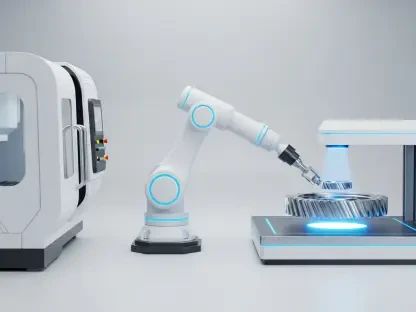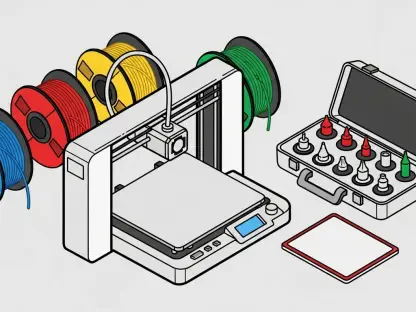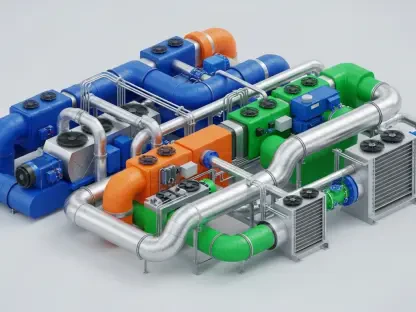The ambitious vision of seamlessly integrating 3D printing with silicone manufacturing is rapidly gaining traction. Industry leaders are exploring how to harness the flexibility and precision of additive manufacturing to elevate silicone’s applications across diverse sectors. Stratasys, known for spearheading innovations in 3D printing, has entered an alliance with Shin-Etsu, a major Japanese chemical firm, to introduce P3 Silicone 25A. This collaborative effort signifies a bold stride toward the future, merging the dependable attributes of traditional silicone with the groundbreaking potential of digital light processing systems. This new material embodies a tangible shift in technological paradigms, offering manufacturers a novel means to produce components with remarkable accuracy and versatility. As this new silicone material becomes available, it could reshape an entire sector, providing unprecedented capabilities for businesses truly requiring adaptable, high-quality parts.
The Significance of the Stratasys and Shin-Etsu Collaboration
Stratasys and Shin-Etsu’s collaboration represents a watershed moment in the evolution of 3D printing technologies and materials. Recognized as titans within their respective industries, the partnership brings a blend of additive manufacturing expertise and advanced chemical development. Their collaboration underlines a commitment to bridging conventional manufacturing standards with cutting-edge 3D printing innovations. The introduction of P3 Silicone 25A, a product of this partnership, reflects a concerted effort to meet the high demands traditionally associated with silicone manufacturing. This material combines unique properties, such as biocompatibility and low flammability, with the innovative ability to be 3D printed. These characteristics significantly expand the range of possible applications, allowing for the creation of complex and intricate designs unachievable by traditional silicone processing.
Beyond the technical marvel, Stratasys and Shin-Etsu’s collaboration suggests a broader trend within the 3D printing industry, emphasizing the creation of specialized materials that align with existing industrial needs. As demand grows for components that must be both flexible and durable, the introduction of P3 Silicone 25A highlights ongoing efforts to address this challenge. Both companies are adeptly leveraging their strengths to orchestrate a shift towards materials meeting precision requirements in fields such as automotive, aerospace, and wearables. The pivotal role of elastomeric materials in driving industry growth fuels the need for constant innovation. Their collaboration not only introduces an extraordinary material but also solidifies a foundation on which the next generation of manufacturing can be built.
Applications and Impact of P3 Silicone 25A
P3 Silicone 25A sets a new benchmark by offering properties like flame retardancy and biocompatibility, alongside the ability to be 3D printed. This opens up a realm of possibilities for its application within high-performance arenas. Its potential extends vastly across sectors such as automotive, aerospace, and consumer electronics, where its properties can be fundamentally transformative. Moreover, the ability to rapidly produce parts like seals, gaskets, and soft-touch components provides evident logistical advantages. This great boon for manufacturers comes from the capacity to fabricate parts quickly, eliminating traditional molds, resulting in reduced lead times and lower inventory needs.
The real strength of P3 Silicone 25A lies in its transformative impact on manufacturing efficiency and product customization. 3D printing enables on-demand production tailored to specific requirements, fulfilling a need for unique components without incurring prohibitive costs. This flexibility is particularly vital in industries where machine downtime can have costly implications. By swiftly producing replacement parts with precision, companies can ensure more seamless operations and improved supply chain management. As silicon applications for soft robotics and medical devices advance, 3D printing’s capability to create intricate forms quickly elevates its status as an indispensable tool for innovators and engineers.
Economic Implications and Future Trends
As P3 Silicone 25A enters the market, its economic implications extend far beyond its technical capabilities. The introduction of this material could spur competitive dynamics, as other companies, such as Formlabs, Henkel, and Carbon, may need to revise their strategies to match the innovation presented by Stratasys and Shin-Etsu. With pricing being a significant consideration in the adoption of new technologies, the cost of P3 Silicone 25A will likely influence market reactions and the broader landscape of 3D printing materials. Lower initial costs could rapidly hasten adoption rates, compelling competing firms to innovate continually and refine their offerings to retain relevancy in the market.
Prospective developments in 3D printed silicone technology may incite a cascade of advancements in processing, chemical formulations, and material resilience. The arena of 3D printed elastomeric materials invites a wave of innovation suggested not only by Stratasys and Shin-Etsu but by other organizations invested in pushing the boundaries of what these materials can achieve. This might include enhancements in the mechanical properties of silicone, the introduction of even more specialized formulations, or the development of eco-friendlier production techniques. The collaborative innovations inspire a comprehensive re-evaluation of how silicone can be efficiently fabricated to maximize both form and function.
Charting the Path Forward
The collaboration between Stratasys and Shin-Etsu marks a significant development in the realm of 3D printing technologies and materials. Both leaders in their fields, this partnership melds Stratasys’ additive manufacturing prowess with Shin-Etsu’s advanced chemical expertise, aiming to blend traditional manufacturing standards with revolutionary 3D printing advancements. Their joint effort has introduced P3 Silicone 25A, a material designed to meet high silicone manufacturing demands. This innovative material stands out for its 3D printability, biocompatibility, and low flammability, enabling the creation of complex designs previously unachievable with standard silicone processing methods.
This partnership also reflects a wider trend in the 3D printing industry, where the focus is shifting toward producing specialized materials that cater to current industrial needs. As demand increases for materials that offer flexibility and durability, P3 Silicone 25A positions itself as an ideal solution. The collaboration is driving innovation across sectors such as automotive, aerospace, and wearables, underscoring the essential role of elastomeric materials in industry progression. This partnership not only introduces pioneering material but also lays the groundwork for future manufacturing advancements.









